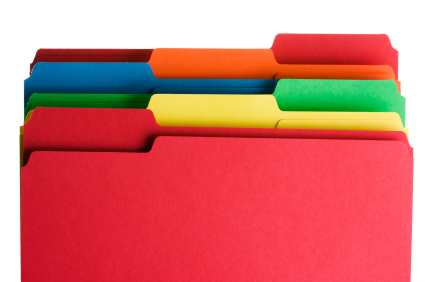Write Faster Using Project-Specific Swipe Files

Copywriters are expected to be able to write about any given topic a client needs, often against a very short deadline. While that’s a tall order for anyone, it’s also a major part of what makes copywriting such a fun and interesting field. On any particular day you could be writing about software, baby food, credit card processing, a new miracle drug, or a non-profit’s latest mission to the Amazon. The list goes on.
What Is A Swipe File?
My copywriting took a major leap forward when I started using project-specific swipe files on a regular basis. A traditional “swipe file” is a collection of previously written, tested and proven copy that helps you generate new ideas. You don’t copy it directly – that would be plagiarism. Instead you use it to study and learn from other writers and to spark new ideas. Having access to swipe files is so much better than staring at a blank page. Most copywriters, including me, arrange swipe files by content type, such as headlines, subheads, call to action, P.S., etc. They make great productivity tools and are a solid defense against writer’s block. Lots of copywriters keep hard copy swipe files in large folders. That doesn’t work for me since I prefer to keep everything digital, so my swipe file collection is based largely on simple text files. Text files pop up quickly on the desktop and don’t have any formatting, which makes them ideal.
Project-Specific Swipe Files
Late last year I realized the swipe file concept might also be useful to better organize my specific writing projects. It was Christmas week, and I had two simultaneous and unexpected project requests – a brochure and a website. We were traveling to visit relatives and it was critical for me to be extremely organized since my deadline for both was the day after New Year’s. Fortunately all the research materials for both projects were available online, so all I needed was a laptop and an internet connection. I started a simple text file for each project based on my rough outlines and started adding relevant content. Within each file I also created rough headlines with a single paragraph of text for easy scanning. As I worked on my drafts, I kept my swipe files open for easy access. This sped up my workflow and helped me make my deadlines without upsetting my family for working over the holidays (I did it while everyone was sleeping!).
Evernote Makes It Easier
While I originally used text files, I have since migrated to Evernote, a fantastic online tool that allows me to include pictures and audio in my swipe files. It’s almost as fast as my text editor, and everything I need for a given project is right there. The best part is I can access it later from my laptop, the web or even my iPhone. Having access on my phone makes it especially useful to capture ideas on the go.
Wrap-Up
A basic requirement for successful copywriting is being a quick study. Project-specific swipe files can really help you quickly ramp up and get your head around a client’s new product or service. Now whenever I start a new project, the first thing I do is create a swipe file just for that topic. It’s a great way to sift through my research and really dive into the subject matter. While I still use my traditional swipe file collection, I depend on my project swipe files for increased productivity and effectiveness.
